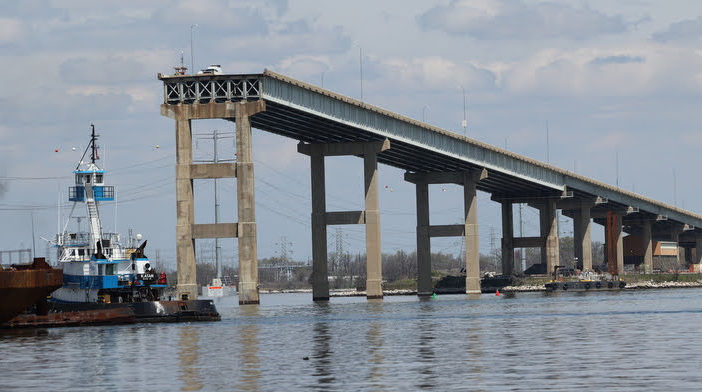By Megan Sayles
AFRO Business Writer
msayles@afro.com
Nineteen vessels have traveled through the 38-foot-deep Fort McHenry Limited Access Channel since it opened on April 25, officials said on April 30. Nine vessels traveled into the Port of Baltimore, while another 10 departed from the docks.
The ships carried cargo, including sugar, cement, fertilizer and lumber. The trips facilitated the work of 200 members from the International Longshoremen’s Association (ILA). Gov. Wes Moore said the channel is a short-term remedy to the impassable, permanent 50-foot channel, which is expected to open by the end of May.
Efforts to clear a permanent Fort McHenry channel continue as experts work to remove the Dali ship and restore full operations to the Port of Baltimore following the collapse of the Francis Scott Key Bridge on March 26. As of April 30, 19 vessels transporting sugar, cement, fertilizer and lumber have traveled through the 38-foot-deep Fort McHenry Limited Access Channel since it opened on April 25. (AFRO Photo / James Fields)
“That’s an important milestone, but it’s a temporary solution. We cannot take our eye off the ball,” said Moore. “The focus is making sure that we are going to open the 50-foot channel, and we will.”
On April 28, the Port of Baltimore announced that the first container ship arrived at the Seagirt Marine Terminal since the Francis Scott Key Bridge collapse. MSC’s Passion III brought nearly 1,000 containers, which were handled by 80 members of the local ILA.
The Fort McHenry Limited Access Channel was closed on April 29 to make way for salvage and recovery efforts and the removal of the Dali. It will tentatively open with a depth of 45 feet on May 10, barring the removal of the ship.
Thus far, 3,300 tons of steel have been removed from the Patapsco River. Authorities have also completed the removal of 183 containers from the Dalie ship. Operations are underway to cut and clear the span of the bridge that rests on the bow of the vessel.
“We are using a precision cutting technique to allow us to safely remove that section from the bow of the ship,” said U.S. Coast Guard Rear Admiral Shannon Gilreath. “By using precision cutting techniques, we are able to institute all those cuts simultaneously. It’s the safest possible for the salvagers themselves, so they’re not trying to cut something and then another section collapses while they’re making that cut.”
Gilreath could not provide a concrete timeline on when the Dali will be removed from the channel.
“There’s a lot of factors that play into that— the engineering, the salvage operations themselves and weather,” said Gilreath. “We’re going to continue to move to do this safely and as fast as possible.”
Moore reaffirmed his commitment to bringing closure to the families of the five construction workers killed in the bridge collapse. Two men remain unaccounted for.
Authorities have used sonar images and other mapping techniques to determine search areas, but efforts have been hindered by the bridge wreckage.
“It’s very poor visibility down there, and there’s so much debris. We believe we have areas of interest, but we’re unable to access those areas of interest,” said Maryland Police Secretary Roland L. Butler. “That’s why it’s so important for the Unified Command divers to work in conjunction with the salvage divers to communicate what they’re seeing, where they’re locating things and to allow the Unified Command divers to develop an effective survey to determine where they’re going to search once they have that area declared safe.”
In light of the tragedy, the Baltimore Mayor’s Office of Immigrant Affairs has opened a fund to provide relief to the families of the seven men working on the bridge during the collapse. It has raised $750,000 in donations.
“While no amount of money can heal the pain that these families are feeling, we want to make sure they know that they will have their bases covered and we will be with them as they navigate this most difficult time,” said Scott.
Megan Sayles is a Report for America corps member.



